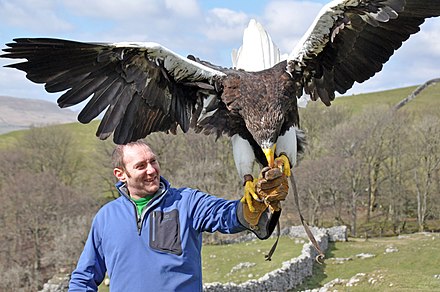Steller’s sea eagles are one of the largest eagle species in the world, primarily found in eastern Russia, specifically the Sea of Okhotsk and the Kamchatka Peninsula. They are also frequent winter migrants to the Japanese Islands of Kuril and Hokkaido, with vagrants spotted in Taiwan and the United States. Steller’s sea eagles prefer sea coasts dotted with estuaries and river mouths, nesting on large, rocky outcroppings or at the tops of large trees.
Nesting Locations of Steller’s Sea Eagles
Steller’s sea eagles are typically found nesting at elevations ranging from sea level to approximately 100 meters. They prefer to build their nests on:
- Large, rocky outcroppings
- The tops of large trees
These nesting sites are often located along the sea coasts, near estuaries and river mouths, which provide a plentiful food source for the eagles.
Breeding and Nesting Behavior
 Image source: stellers sea eagle
Image source: stellers sea eagle
During the breeding season, which lasts from February through August, Steller’s sea eagles are monogamous and often seen in breeding pairs. Both males and females secure their own breeding territories early in the season, and nest building occurs in February or March.
The nests of Steller’s sea eagles are typically large, measuring up to 2 meters across, and are constructed using thick branches. Pairs will often maintain 2 to 4 nests within their breeding territory and use alternate nests from year to year.
The average clutch size for Steller’s sea eagles is 2 eggs, but can range from 1 to 3. The egg-laying period normally lasts from April through May, and the typical incubation period is 38 days. Chicks hatch between May and June and fledge around 70 days later, leaving the nest by August or September.
Threats to Steller’s Sea Eagle Nesting Habitats
Steller’s sea eagles are classified as Vulnerable to extinction, with less than 5,000 individuals in the population. They face numerous threats in their nesting habitats, including:
- Habitat alteration for hydroelectric power projects and development of the petrochemical industry
- Logging
- Pollution
- Contamination from pesticides (DDT/DDE) and industrial chemicals (PCBs)
- Lead poisoning from eating deer carrion killed by lead shot
- Overfishing, which can reduce the availability of their primary food source
These threats can lead to the degradation and loss of the Steller’s sea eagle’s preferred nesting sites, as well as the accumulation of toxins in their prey, which can have severe health and reproductive consequences for the eagles.
Conclusion
Steller’s sea eagles are one of the largest eagle species in the world, and they primarily nest on large, rocky outcroppings or at the tops of large trees along the sea coasts of eastern Russia and the Japanese Islands. These nesting sites provide the eagles with access to a plentiful food source and the necessary resources to raise their young. However, Steller’s sea eagles face numerous threats to their nesting habitats, which have contributed to their classification as a Vulnerable species. Ongoing conservation efforts are crucial to protect these majestic birds and their unique nesting environments.
References:
– Denver Zoo – Steller’s Sea Eagle
– San Diego Zoo – Steller’s Sea Eagle
– International Wildlife Seminar – Steller’s Sea Eagle
– Animal Diversity Web – Haliaeetus pelagicus
– Animalia – Steller’s Sea Eagle

